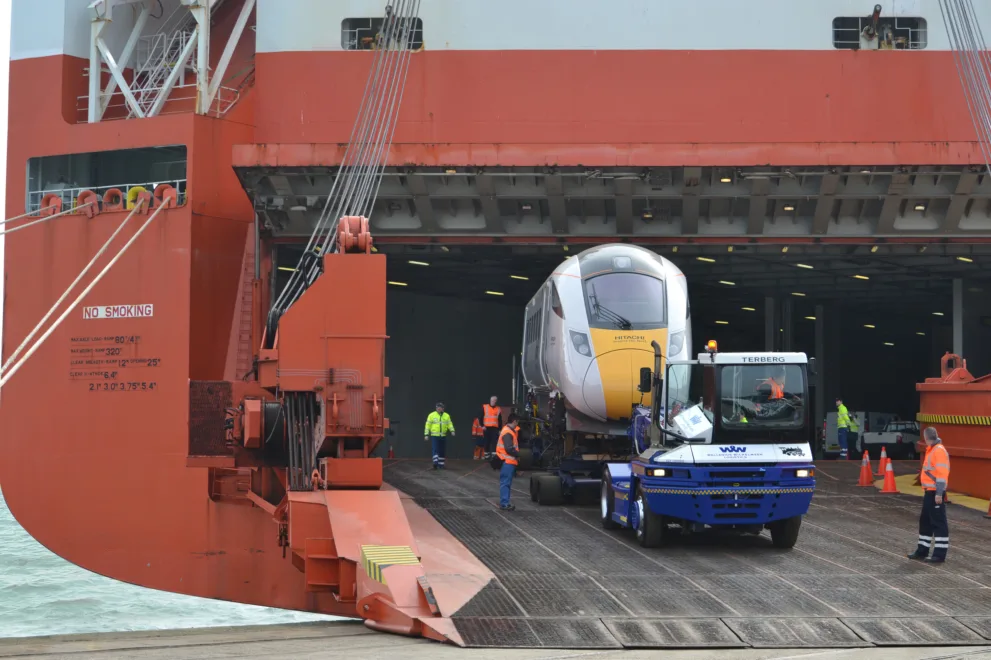DCA delivers EMR ergonomic mock up and HF reviews safely under Covid restrictions
Throughout 2020, despite the difficult working environment caused by the pandemic, DCA has been very busy safely designing and mocking up new trains destined to run on UK railways in the near future. Although public transport has been hit particularly hard by travel and working restrictions, plans are well on the way to provide new high-speed trains built by Hitachi for East Midlands Railways and Avanti West Coast services.
The restrictions in place have not stopped us working in our large build facility close to the centre of Warwick, enabling a range of design and human factors studies to take place. Hitachi are in the final stages of the process to validate the design of the driver’s cab for the new Class 810 BMU trains. These high-speed bi-mode trains can operate self-powered by on-board diesel generators or from overhead electric power lines. This flexibility extends their useful operating range and provides an efficient and sustainable solution as part of an overall strategy to move towards a low CO2 electric future.
DCA has supported the engineering team at Hitachi in Pistoia, Italy throughout the design process, actively engaging in the design of the driver’s cab, ensuring that from an operational and human factors viewpoint it meets all the latest requirements. A key part of the process was designing and building a full size ergonomic mock-up of the cab. With our usual steel framework suppliers in lockdown, we had to design a lightweight composite wood supporting structure that we then built ourselves in-house. The exterior of the cab was not a visual requirement for the HF process and was left as a nominal surface design that the proposed EMR livery was applied to. The key exterior components that impact upon the HF performance of the cab, like the windscreen and wiper, the access steps and cab side door were accurately replicated and proven during driver trials. Inside, the driver’s desk is a visual facsimile of the proposed final design and was used by drivers to review the layout through a series of task analyses, and sign off the position of buttons, switches, and the control HMI (Human Machine Interface) including the use of CCTV and digital displays. And all this was achieved under a series of new procedures and working practices, aligned with the Government’s Covid guidelines and designed to protect the safety of our staff and our visitors from Hitachi and EMR, including the drivers taking part in the HF reviews.
The design process has involved collaboration at each step on the way from inception through design development, human factors assessment and detail engineering. Wherever possible, particularly during the early stages, the project was coordinated through virtual meetings online. Once the mock-up took shape and needed to be physically assessed and reviewed, a Covid secure meeting space was set up in our large build facility to allow face-to-face meetings and HF trials to take place. These required safe physical distancing and the implementation of appropriate control measures such as screens, hand sanitising and face coverings.
This has allowed the HF validation process to continue, engaging representatives from all interested parties, including Hitachi, EMR, the Driver’s Counsel, union representatives and the drivers themselves, with mock-up to agree and sign off the design outcomes.









